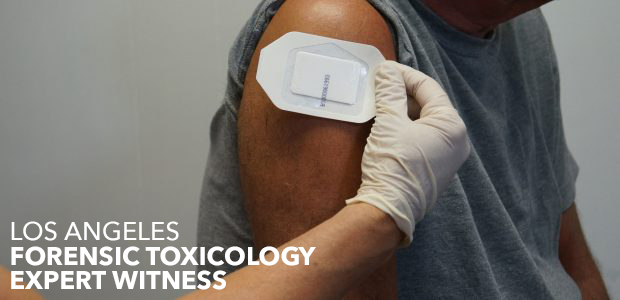The Pros and Cons of Sweat Patches For Drug Testing

The use of sweat patches as a method of drug testing is a relatively new development in the field of forensic toxicology. Sweat patch drug testing is becoming increasingly popular among employers screening employees and job applicants for drug use, although sweat patches are typically used to monitor persons on probation who need to be tested over long periods. In an interesting recent case, Cameron Douglas, the son of Michael Douglas, was found to have violated his probation after his sweat patch tested positive for marijuana. While there are many features of sweat patches which make it an effective drug testing method, it is important to understand that it is not without its flaws.
How Do Sweat Patches Work?
Sweat patches are made up of an absorbent pad which is secured to the skin through a strong adhesive membrane resembling a Band-Aid. The patch is worn for up to 14 days, and it collects sweat deposits from the wearer’s skin. About 99% of the sweat evaporates as water, leaving behind chemical excretions on the sweat patch. If the wearer uses drugs at any point while wearing the patch, either the drug or its metabolite will be detected on the patch once it has been removed for forensic testing. Sweat patches can detect alcohol, amphetamine, cocaine, heroin, morphine, methadone, methamphetamine, and phencyclidine (PCP) with relative accuracy, so they may be used as a broad-spectrum drug test.
Pros Of Sweat Patches As A Method Of Drug Testing
There are a number of advantages to using sweat patches to detect whether a person has been using illegal substances, which all contribute to the enhanced efficacy of the test.
- Tamper-Proof
The sweat patch test is virtually tamper-proof, as the patch cannot be re-attached to the skin once it has been removed. Attempts to remove the patch by the wearer will be easily detected by a trained patch collector. Further, the test cannot be ‘cheated’ – consuming vast amounts of fluids will not be able to hide the presence of drug compounds on the pad. - Longer Detection Window
Another important advantage of the sweat patch is that it detects the presence of drugs continuously for a long period. If the patch is worn for 14 days, any drug use during that time is capable of detection. Urine sampling, on the other hand, is a once-off test which has more limited detection window of 1-5 days (depending on the substance). This particular feature of the sweat patch makes it an attractive choice for employers. - Non-Invasive
Unlike blood and urine samples, sweat patches are far less invasive and do not infringe on the wearer’s privacy. The patches are completely waterproof and are worn with almost no discomfort, and are easily applied and removed.
Cons Of Sweat Patches As A Method Of Drug Testing
The many advantages of sweat patches are unfortunately outweighed by a few disadvantages which employers and users of the test need to be aware of.
- Risk of False Positives
One serious disadvantage of the sweat patch is that there is a small possibility of a false positive test result caused by passive exposure to drugs. For example, secondhand marijuana smoke may contaminate the patch and cause the wearer to test positively for drug use. Contamination ‘from within’ is also possible when long-term drug users have drug residues stored in their skin from long periods of addiction. The stored residue may be released while the patch is being worn, giving the impression that the drug has been used recently when in fact it has not. - Limits to Use
The sweat patch cannot be used on persons who have abrasions on the skin or who are excessively hairy, and in some cases, poor application and removal of the patch have hampered its effectivity.
An Expert Forensic Toxicologist’s Advice
Ultimately, no drug test method is completely effective and accurate all of the time. Each method comes with its own advantages and disadvantages, and some methods will be more suited to employee drug testing than others. Sweat patches have been used successfully in many scenarios, and their few disadvantages can be mitigated. If you have any further queries about the pros and cons of sweat patch drug testing, don’t hesitate to contact the offices of Okorie Okorocha for professional and reliable advice which you can trust.




